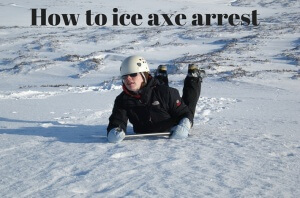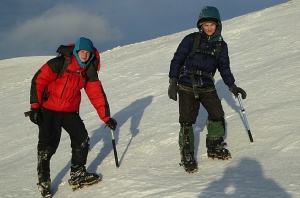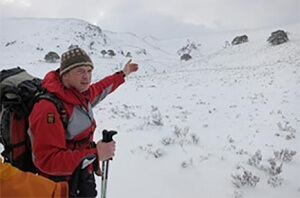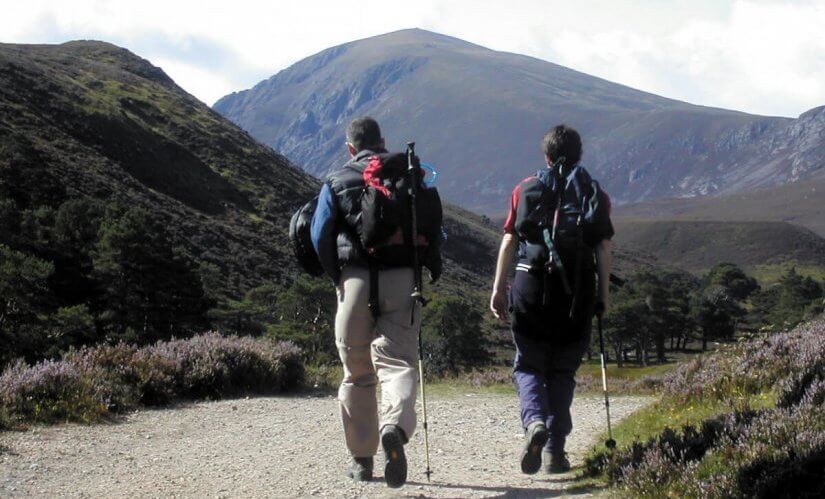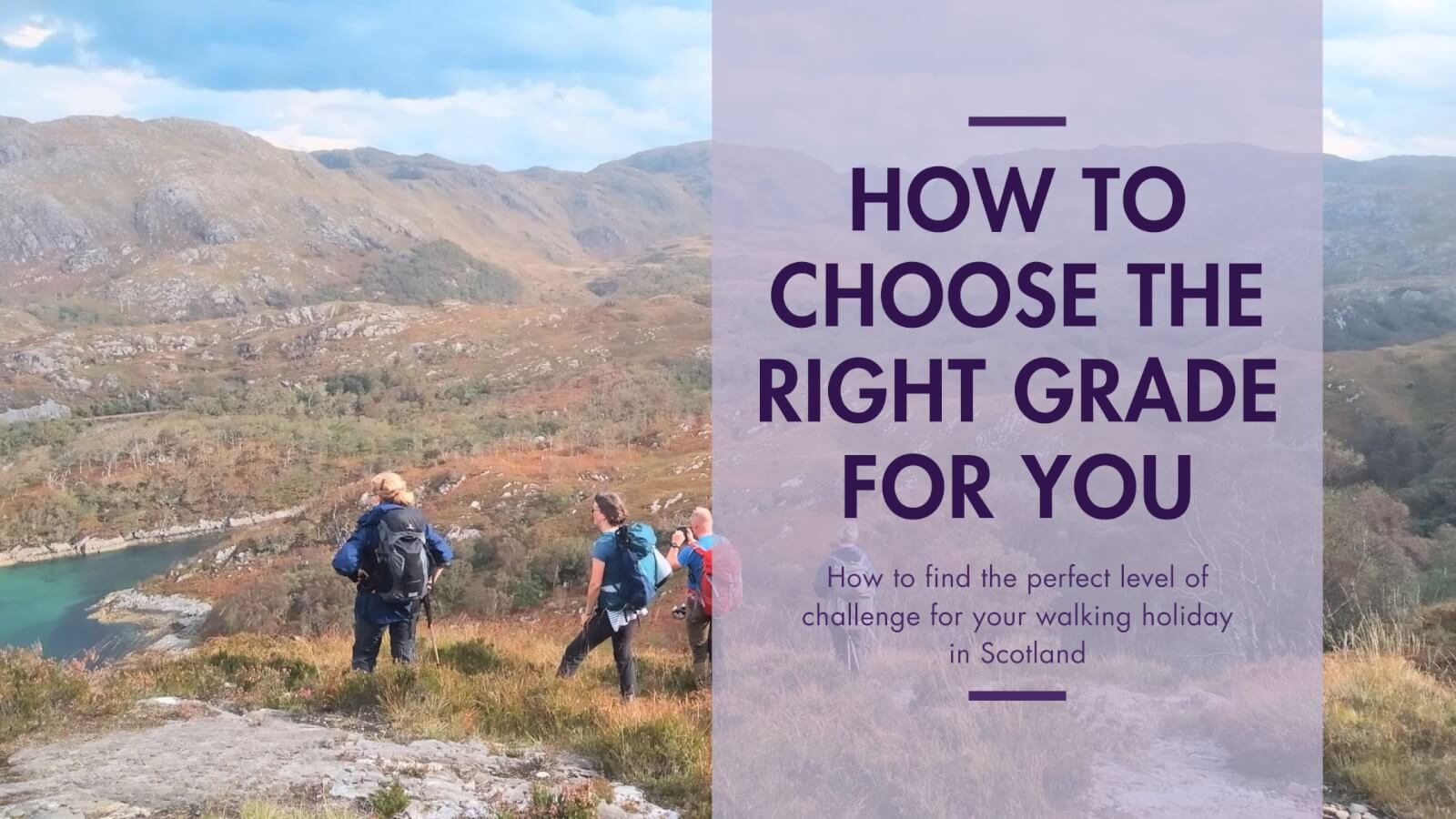Choosing an ice axe
There are several factors to consider when choosing an ice axe.
There are 2 reasons why you might need to buy an ice axe:
- you want to go walking in winter
- you are ready to go ice climbing
Your reason will define the type of axe you are looking for
What to look for in a walking ice axe
How do you know if the axe you are looking at is designed for walking or climbing? Traditionally, one of the defining features is the length of the shaft.
The traditional method of choosing a walking ice axe
The traditional mantra: hold the axe by the head with the shaft pointing downwards. The point should be about 2 inches (5cm) from the ground.
Andy’s tip: I never really warmed to this line of thinking. After many years experience as a winter skills instructor, it quickly became apparent to me that this method was outdated.
A walking axe is very much a multi purpose tool with the user asking it to perform a whole number of tasks in a single outing. Some tasks may well be better served by having a longer shaft whilst others are not. It is therefore going to boil down to a bit of a compromise but I would suggest the shaft length for a walking axe should be no longer than 55 cm.
What’s good about a shaft of more than 55cm
Techniques where a shaft length of over 55 cm is advantageous:
- Cutting slash steps down the fall line of a steep slope
- Self-belay in deep soft snow
- Delaying departure down slope in an avalanche? – maybe
What’s good about a shaft of less than 55cm
Techniques where a shaft length of 55 cm and under is advantageous:
- Self-belay in anything other than soft deep snow
- The various self arrest techniques
- Cutting slash steps up hill
- Making slash steps ahead of you
- Cutting dove tail steps
I’ve found an axe with a long shaft is often ungainly to swing
Andrew Bateman
When you’re thinking about visiting the Pyrenees or the Alps or even the Andes, it would be a good idea before you go to give yourself a bit of a safety head start by learning basic safe movement in winter conditions – try a 2 day winter skills trip.
If you’re going on a guided trip a 2 Day winter skills course should give you enough skills to be safe with your instructor who will take care of the navigation and group management for you.
However you’d like to be more independent in the hills you may want to consider the full 5 day Winter Skills and Navigation course. You’ll learn how to deal with “whiteout” conditions as well as technical safety skills so that you can remain calm no matter what nature throws at you.
For more tips please check out our: Top 10 tips for winter skills or consider why you should want to book a winter skills course
For further guided walking holiday options try our main home page



